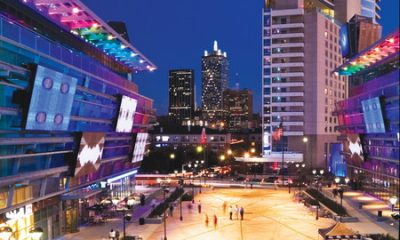“More than any other historical epoch, our sense of reality is severely challenged. It’s the Internet, Photoshop, digital effects in cinema, video games — tools that have arrived with instant impact. It’s like warfare. For centuries, warfare was the same: medieval knights with a sword in combat. Suddenly, he was confronted with firearms and overnight was never the same. It is now a moment of the same magnitude for us.
– Werner Herzog, filmmaker
Cinema verité translates, literally, to “film truth,” meaning films that depict life as it is. This realistic, sometimes documentary, styling utilizes handheld cameras and unplanned sets with people, ostensibly, as they are. As a commercial-film technique, cinema verité styling gained popularity in the ’60s and has expanded since.
Look for cinema-verité styling during the explosive moments of action films — camera blurs, shakes and unscripted (seemingly) incidents caught on camera.
We’re also seeing cinema verité practiced on the Internet, shown on YouTube, MySpace, thousands of proletarian websites and more than a few million blog sites. Unfortunately, we may have to get used to it. Homespun cinema verité is rising faster than a stepped-on cat.
However, as easily as you can walk around a cat, you can avoid making lousy videos.
Advertisement
Video cameras
Video-camera manufacturers offer various memory types: miniature digital video cassette (DVC) tapes (a nuisance), smart cards (better, but expensive), DVD disks (my preference) and an internal memory which requires downloading when full (which is difficult in the field).
If you want to produce video content for your shop or customers, you’ll find thousands of pounds of useable equipment and software at your local electronics store. There, you’ll see amateur-level, video-camera prices starting at $250, with the HDTV cameras at the high end, at approximately $3,000. A medium-price video camera will give you limited production abilities.
You don’t need HDTV to make videos for the low-resolution Internet, but it does improve plasma and LCD-based, flat-panel screen images. Be warned that HDTV requires high-end computer systems — think memory — to process the high-pixel images.
Before choosing HDTV, talk to experienced, audiovisual salespeople, to determine exactly what systems you’ll need. Retailers, by the way, often refer to HDTV as “HiDef.”
Video-editing software
Video-editing software is complex to master, but not impossible. Essentially, you work two or more tracks, both visual and sound editing, that can come from the same or separate sources.
I’ve used both Pinnacle Studio 10 and Adobe’s Premier video-editing software. My Pinnacle system constantly crashed, but, hopefully, that company has removed the bugs from its new systems. Adobe’s system is less troublesome.
Advertisement
A new offer is Corel Corp.’s (Ottawa, ON, Canada) VideoStudio® 11 series, a video-editing and DVD-authoring software; I’m looking forward to testing it. Offered in two versions, the Ulead® VideoStudio® 11 and Ulead VideoStudio 11 Plus, Corel says it’s an end-to-end solution for capturing, editing, authoring and burning HD-DVD videos.
It features AVCHD editing, an enhanced DV-to-DVD Wizard and a Movie Wizard. The software lets you produce titles and subtitles; further, it has automatic color/tone correction and other video-production solutions.
AVCHD is an acronym for Advanced Video Codec High Definition, that is, a high-definition recording format developed by Sony and Panasonic. A codec is a software component that compresses (“co”) or decompresses (“dec”) video.
VideoStudio 11 uses the MPEG-4 AVC video codec, which means it’s quite versatile. It can handle 1080i and 720p high-definition systems, as well as a 16:9 (widescreen) aspect ratio and multi-channel digital audio.
VideoStudio 11 supports all popular video formats, including standard and HDTV, images and audio. You enhance your productions by importing video from all common sources: DV camcorders, including HDV and AVCHD, hard-drive camcorders and USB camcorder devices, plus mobile phones, set-top DVD recorders, digital/analog TV tuners, VCRs and webcams.
The system’s Dolby Digital 5.1 Creator technology converts two-channel stereo sound to Dolby Digital 5.1; the software also features color-correction technology, white-balance and an anti-shake and enhance lighting filter.
Advertisement
VideoStudio 11’s Auto Color & Tone tools auto-correct the color and tone of videos recorded in low light or less-than-perfect, white-balance conditions. The software’s MPEG organizer suggests encoding settings for re-rendering quality and speed, and allows you to choose the best MPEG setting when combining multiple-format clips.
Distributing your work
Corel also offers its new Audience™ software, which provides the tools you need to create, manage and play electronic digital signage (EDS). It’s designed expressly for applications in cable, community television, EDS and similar systems. Audience ships with professional templates, plus CorelDRAW 10 Graphics Suite and CorelPHOTOPAINT software.
The package allows you to produce and/or acquire content from various sources. It will import broadcast-quality video, audio, graphics and animation and, with professional scheduling, deliver the same to your customer’s system.
Audience users include Outdoor Broadcast Network (Toronto), a media and consulting company, and Young & Rubicam, a Philadelphia-based marketing and communications firm. Outdoor Broadcast has used Audience for electronic-digital billboards, and Young & Rubicam has applied Audience-managed images to the Toronto Air Canada Centre.


 Photo Gallery2 weeks ago
Photo Gallery2 weeks ago
 Ask Signs of the Times2 weeks ago
Ask Signs of the Times2 weeks ago
 Paula Fargo1 week ago
Paula Fargo1 week ago
 Real Deal5 days ago
Real Deal5 days ago
 Photo Gallery1 week ago
Photo Gallery1 week ago
 Women in Signs2 weeks ago
Women in Signs2 weeks ago
 Women in Signs2 weeks ago
Women in Signs2 weeks ago
 Projects5 days ago
Projects5 days ago












